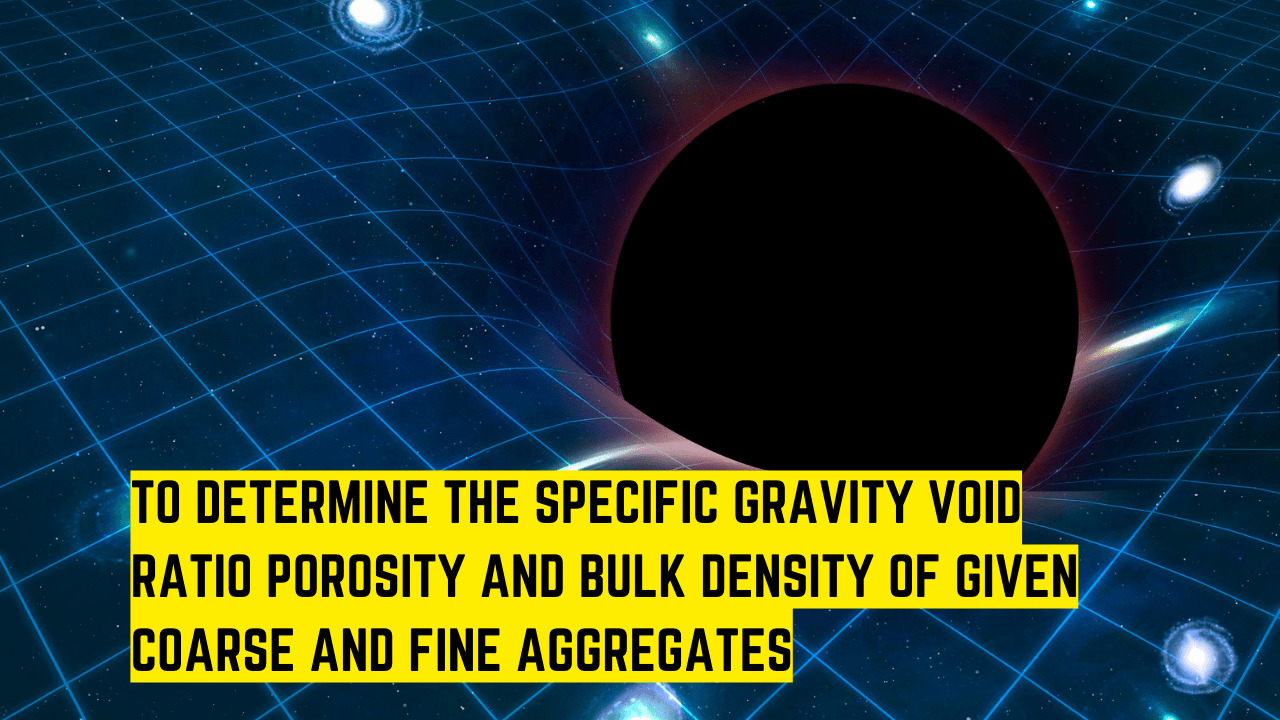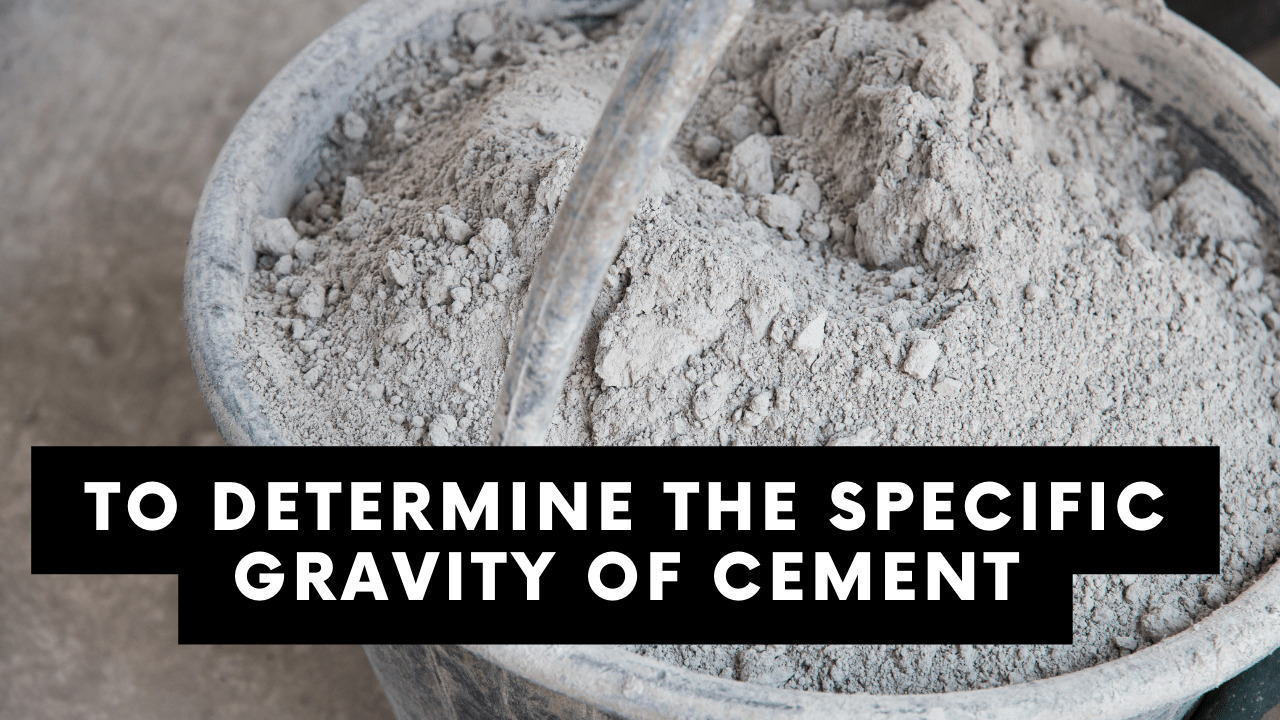Table of Contents
Standard Used
ASTM C-191-13
Objective
The objective of this test is to determine the initial and final setting time of cement which helps in determining the duration for which the cement remains plastic.
Related Theory
Setting of Cement:
When water is added to powdered cement, a paste is formed that remains plastic for an ample duration. The setting of cement indicates the stage of very little strength gain and the cement remains in a plastic or semi-fluid state.
However, any stirring or whipping of the paste at this stage can be injurious and must be avoided. Finer cements lead to more hydration and therefore, quick settlement awaits.
During setting, the cement paste attains stiffness and conforms to the shape of the mold it is present in. In the initial setting phase, the cement paste begins to lose its plasticity and the final set is the point when the paste gets completely devoid of plasticity.
Fig.: Setting of the cement
It is to be remembered that the setting and hardening of cement are not synonymous and the latter is explained below.
Hardening of Cement:
As a result of the hydration reaction between cement and water, hydrate gels are formed and the water evaporates from the surface of the cement. Therefore, over time, the cement paste begins to harden and gains strength by doing so.
The rate of strength gain in cement is pertinent to the hydration process is termed hardening of the cement. The hardening of cement commences after its setting and the cement becomes capable of withstanding the intended loads.
Fig.: Hardening of the cement
Initial Setting Time of Cement:
The time recorded between the instant cement and water come in contact with each other and the instant the VICAT apparatus needle gives a penetration of 25mm in the standard paste when tested under standard conditions of temperature and humidity is called the initial setting of cement.
A delayed initial setting of cement is preferred. According to the ASTM standard, the initial setting time of cement in no case should be less than 45 minutes and the final setting time should not be in excess of 375 minutes (6.25 hours).
Final Setting Time of Cement:
This is the time recorded between the instant cement and water come in contact and the time at which the VICAT apparatus needle gives no appreciable penetration into the paste.
The final setting time of cement should preferably not exceed 10 hours.
Significance of determination of initial and final setting time of cement
It is essential for mortar and concrete to remain plastic for an ample duration in order to handle the concrete operations properly. Neither should it set too early nor should the setting time be too much. This is because in the former case, the cement or concrete will not remain workable and there will not be sufficient time available to place and finish them.
On the other hand, in the latter case, the construction time will increase, thereby causing a delay in the sequential activities and a hike in the project cost, too.
Therefore, determination of the initial and final setting time of cement gives an idea about the total duration for which the cement paste can remain plastic, and the cementing or concreting activities can be performed feasibly.
Apparatus
- VICAT Apparatus with a needle having a cross-section of 1mm2 and length of 50mm. The apparatus consists of a frame having a scale mounted on it. The needle penetration is given by the reading on the scale. The mold that is to contain the paste is tapered in cross-section and hollow at both ends with internal diameters of 70mm and 60mm at the bottom and top respectively. It is placed on a non-absorbent glass plate, square in shape.
- Hydraulic cement (OPC)
- Weighing balance, to measure the weight of cement taken for the test
- Spatula, for making the cement paste by mixing powdered cement with water
- Graduated cylinders, to add a measured quantity of water to make the cement paste
- Trowel, for handling the cement paste
Test Procedure
Test Requisites
The cement paste must have normal consistency. Therefore, it is imperative to perform the standard consistency test on cement prior to determining its setting time.
Test Conditions
- The test environment should have a temperature of 23°C with an allowable variation of ±3°C.
- The water to be used for the preparation of cement paste should have a temperature of 23±2°C.
- The relative humidity of the environment must be maintained at, the least, 50%.
ASTM Recommendation for Sample Weight of Cement
The ASTM standard suggests that the amount of cement to be taken for the test should be 650gm. However, it is not mandatory to get this condition checked.
Procedure
- Prepare a cement paste of standard consistency.
- Roll the paste in the shape of a ball by tossing it several times (6 times) between your hands.
- Fill the mold with the cement paste carefully and trim the excess to smooth out top surface of the mold.
- Place the mold on the glass plate with the larger diametric end facing the bottom.
- Place the mold in a moist cabinet for 30 minutes without disturbing it.
- Allow the needle to free-fall into the paste by rotating the release pin, and record the penetration after 30 seconds of its release.
- Repeat step 6 every 15 minutes till the penetration value is tantamount to 25mm.
- The recorded time for 25mm penetration is the initial setting time of cement.
- Record the time taken to achieve almost negligible needle penetration. This will give the final setting time of cement.
Observations and Calculations
Type of cement =
Source of cement =
Amount of cement taken (g) =
Standard consistency of cement (%) =
| Observation | Time | |
| (Minutes) | (Hours) | |
| Initial Setting Time | ||
| Final Setting Time | ||
Results
The initial setting time of cement is .
The final setting time of cement is .
Precautions
- Care must be exercised to not compress the paste while filling it in the conical mold.
- The test setup must be prevented from external sources of vibrations. Failing to do so will compact the cement paste.
- The needle must be clean so that during its penetration, the cement paste does not adhere to it.
- Every new penetration should be made at least 0.25 inches away from the preceding dented point on the top of the paste.
- Each penetration should be made at least 25mm away from the sides of the mold.
Discussion
- Finer cements show quicker setting in comparison to relatively coarser ones. This is because the hydration reaction in them gets accelerated due to greater surface area.
- A failed attempt of adhering to the standard specifications of temperature and humidity directly impacts the setting time of cement. A higher temperature tends to favor the early setting of paste and a lower temperature can be an impediment to the setting process of cement.
- A larger value of initial setting time and a smaller value of final setting time is desirable. This is because a larger initial setting time indicates the availability of plenteous time in carrying out the transportation, placing, and finishing operations for a concrete structure. Moreover, a smaller value of the final setting time proves relatively economical in terms of tapering large expenditures on the formwork.








